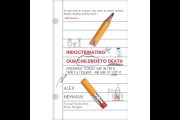
In an age of American culture wars against the particularities of the various regions of these United States, many citizens act as if such regional differences which remain are almost an embarrassment. The notion that one’s identity is first centered on hearth and home; that religious faith first finds its expression at a local altar and pulpit; and that one may take pride in one’s community, state, and nation — in that order — has often fallen beneath the assault of atomizing individualism.
Ours is an age of mass production of goods, sentiments, language, and beliefs, and thus much of life is marked by a stultifying sameness. A trip to the schools and the shopping malls of America should quickly convince someone that a uniformity of mediocrity is far from laudatory unless one is already among the ranks of the spiritual impoverished whom Jose Ortega y Gasset memorably denoted as the “masses.” The mass man has no past and no future. There can be no telling of the story of America without the varied stories of those states of which the nation is composed, and there is no history of the Union apart from the history of her states. When the states no longer live in the minds of those who love or hate their various histories, the Union shall have died, as well.
Among the living state stories, there are few that excite such a passionate response as the story of Texas. Whether one loves it or hates it, the Lone Star State evokes an emotional response that few other states can hope to match. Various elements of the early history have entered into the consciousness of the nation as a whole; "remembering" the Alamo, for example, transcends the local and the regional to give voice to part of the story of the whole nation. But an element of Texas’ history that often seems to be forgotten by nearly everyone except for those who endeavor to use a truncated version of that history to advance an anti-American agenda is the history of Spanish Texas. For those who desire to know the history of Texas before its independence and eventual union with the American Republic, there is a wonderful resource in the new, second edition of Donald Chipman’s and Harriett Joseph’s Spanish Texas, 1519–1821.
The authors begin their book with an effort to provide a brief summary of the history of the “First Peoples” (i.e., Indians) prior to Spanish colonization. Indeed, throughout Spanish Texas, they are sympathetic to the histories of the First Peoples without denigrating the history of those who later settled in the region. Actually, Chipman and Joseph demonstrate an admirable evenhandedness throughout their account, allowing the virtues and vices of all sides to undergo analysis. Spanish difficulties in balancing the interests of missions and secular administration form a significant thread woven through the history of Spanish Texas, and tensions inherent to relations to the First Peoples are inextricably interwoven with those difficulties.
As a result, they challenge popular assessments on several key occasions, including the Red River campaign of 1759 (which is not to be confused with that of 1864), which, although more often cast as an Indian victory, they note: “To be sure, Spanish losses were significant, but the Indians suffered even greater ones. And, finally, there is no evidence of the Indians immediately celebrating victory — rather, there followed weeping and wailing for their killed and wounded after the battle of October 7.” The authors also document the way in which various Indian tribes would attempt to implicate Spanish troops in their own intertribal warfare, attempting to lure their opponents into attacking Spanish settlements.
Chipman and Joseph provide readers with a glimpse into the mentality of Spanish loyalists, who viewed the emergence of the American Republic as an entity that inherently threatened the claims of the Spanish crown in North America. Thus Governor Manuel Maria de Salcedo observed in 1809:
The Anglo-Americans are naturally industrious. If this were not true, they would not love to live in deserts, where their sustenance depends on their industry. This kind of life hardens them; that is to have the traits of robustness, agility, sobriety, and valor.”
As the authors observe, “But it was not U.S. subversion that would end 300 years of Spanish claims to Texas. The real problem, although few could discern it in 1803, lay in the heartland of New Spain, and in Spain itself.” Texas’ potential remained more of a promise than a reality during the Spanish colonial period; the waves of Americans who would later arrive in Texas knew no parallel in Spanish settlement of the region. “By the late eighteenth century, Texas remained one of the least populated regions of New Spain. Overall, the Interior Provinces averaged six inhabitants per square league (approximately seven square miles), but both Texas and Coahuila had slightly less than two per square league. Only the desert region of Baja California, with an average of one person per square league, had less. Including the residents of missions, the total population for settled regions of Texas in 1777 was 3,103. It had risen to only 3,169 in 1790.”
The final chapter offers numerous insights into the lingering significance of the Spanish period of Texas history for the future state, and the larger union. (Among the interesting influences pointed to by Chipman and Joseph are in the realm of law; e.g., the debt that the entire notion of adoption owes to Spanish, rather than English, legal traditions.) Still, throughout the entirety of the work, a reader may easily develop a sense of the opportunity wasted by the government of New Spain. Despite the readily apparent value of Texas (as noted by Spanish explorers, settlers, and governmental officials), the settlement of the territory was halting, and poorly executed, and often seemed to be motivated more by fear of French (and, later, American) influence than a commitment to earnestly settle the territory that had been claimed. Thus, the authors observe that “in late summer 1821, as a result of the independence of Mexico, Texas passed from Spanish to Mexican control with scarcely a protest by its inhabitants. The preceding seven years had been frightfully destructive…. it is likely that Texas in 1821 had a non-Indian population of less than 3,000 — fewer than the 3,103 reported in the first census of 1777.” The fledgling Mexican state was a mere 14 years old when Texans began their own war of independence on October 2, 1835 and the "Anglo" population of Texas was roughly 10 times what the non-Indian population had been in 1821. Thus, Spanish Texas 1519-1821 is a fascinating account of the early history of Texas. But in an account of what is now known as the history of Texas, it is still but a prologue to all that has come to pass in a rich, full history.
Donald E. Chipman and Harriett Denise Joseph, Spanish Texas, 1519–1821, revised edition (Austin: University of Texas Press, 2010) 367 p.



